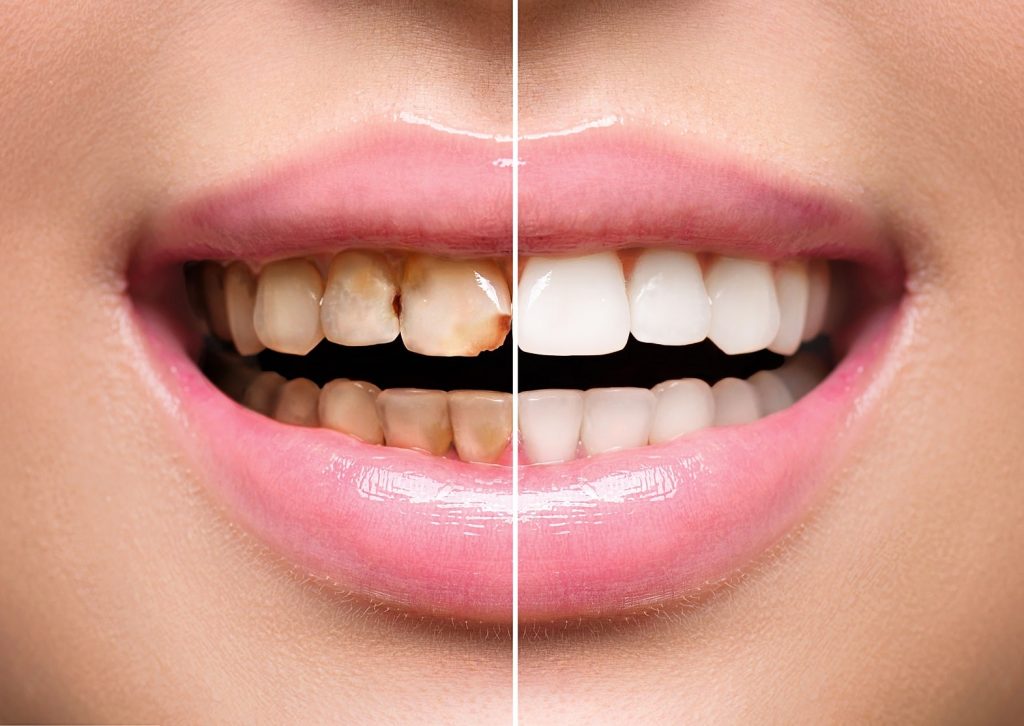Dental Restoration
The main goal of dentistry is to help you protect and maintain your oral health so as to prevent non-optimal issues and conditions from arising. That said, even the most rigorous oral hygiene habits cannot protect against all of the potential tooth damages that are caused by injury or decay. When these damages occur, the function and structure of the tooth is affected, which in turn can affect the individual’s overall health. This is where dental restoration comes in.

What Comprises Dental Restoration
Anything that helps to resolve oral health issues and works to restore the functional and esthetic state of the mouth would fall under the heading of restorative dentistry. Often also referred to as the specialty of prosthodontic dentistry, restorative dentistry would include such things as dental fillings, veneers, crowns, bridges, partial and full dentures and implants.
The primary purpose of restorative dentistry is to preserve natural teeth wherever possible and replace natural teeth wherever necessary. Preserving natural teeth can help to preserve structure and function, but there are some occasions where the damage to a tooth is simply too severe to be restored. In these cases, the tooth should be removed and the gap filled with a replacement denture, bridge or implant as soon as possible. Doing this helps to prevent numerous issues from developing as a result of the gap, including bacteria and plaque buildup, excessive chewing stress on remaining teeth, shifting teeth and misaligned bite and more.
When restorative dentistry is needed because of tooth damage, your dentist will carefully examine the tooth to determine whether it can be preserved or must be removed. Your oral and general health will also be taken into consideration since certain dental restoration procedures, such as dental implants, require high levels of health. They will thoroughly discuss the situation and their recommendation with you, and encourage you to ask any questions or discuss any concerns you may have.
There are many different types of dental restoration that work to repair teeth that are worn, decayed, damaged or missing, but they fall into two main categories:
- Direct dental restorations. With direct dental restorations, your dentist will prepare the tooth and place a filling into it in a single office visit. The type of filling your dentist chooses for a direct dental restoration will depend upon the type of repair needed, as well as the location of the repair, due to the fact that some fillings are made of substances that are clearly visible when in the mouth and some fillings are better suited to withstanding heavy chewing pressure than others. In many cases, direct dental restorations are appropriate where the tooth damage is not too extensive.
- Indirect dental restorations. Where tooth damage is more extensive, an indirect dental restoration may be needed. These restorations require more than a single office visit because the area must be prepared for the restoration before an impression is taken, and then the restoration will be fabricated in a dental laboratory and installed at a later date. Crowns, also known as caps, which cover the entire chewing surface of a tooth, onlays, which cover one or more cusp tip, and inlays, which cover the surface within the cusps of the tooth, are all types of indirect dental restorations. Like direct restorations, indirect restorations can be made from different materials that serve different purposes.
Most dental restorations should be cared for in the same way that you care for your natural teeth–with twice daily brushing, once daily flossing and twice yearly dental examinations and cleanings. That said, there are some dental restorations that need to be cared for more gently–such as dentures that can be removed and cleaned with a mild soap rather than an abrasive toothpaste.
Depending on the type and location of the dental restoration and how well it is cared for, it can last for some time before requiring repair or replacement. For more information about dental restoration, contact Dr. Nurminsky.
